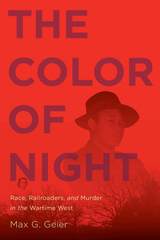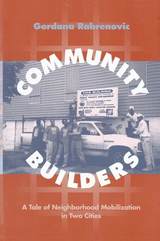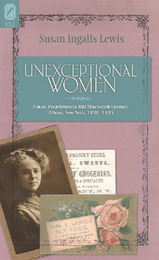3 books about Albany

The Color of Night
Race, Railroaders, and Murder in the Wartime West
Max Geier
Oregon State University Press, 2015
On an unusually cold January night in 1943, Martha James was murdered on a train in rural Oregon, near the Willamette Valley town of Albany. She was White, Southern, and newly-married to a Navy pilot. Despite inconsistent and contradictory eyewitness accounts, a young Black cook by the name of Robert Folkes, a trainman from South Central Los Angeles, was charged with the crime. The ensuing investigation and sensational murder trial captured national attention during a period of intense wartime fervor and extensive Black domestic migration. Folkes’ trial and controversial conviction—resulting in his execution by the state of Oregon—reshaped how Oregonians and others in the West thought about race, class, and privilege.
In this deeply researched and detailed account, Geier explores how race, gender, and class affected the attitudes of local town-folk, law officers, and courtroom jurors toward Black trainmen on the West Coast, at a time when militarization skewed perceptions of virtue, status, and authority. He delves into the working conditions and experiences of unionized Black trainmen in their “home and away” lives in Los Angeles and Portland, while illuminating the different ways that they, and other residents of Oregon and southern California, responded to news of “Oregon’s murdered war bride.” Reporters, civil rights activists, and curiosity seekers transformed the trial and appeals process into a public melodrama.
The investigation, trial, and conviction of Robert Folkes galvanized civil rights activists, labor organizers, and community leaders into challenging the flawed judicial process and ultimately the death penalty in Oregon, serving as a catalyst for civil rights activism that bridged rural and urban divides. The Color of Night will appeal to “true crime” aficionados, and to anyone interested in the history of race and labor relations, working conditions, community priorities, and attitudes toward the death penalty in the first half of the 20th century.
In this deeply researched and detailed account, Geier explores how race, gender, and class affected the attitudes of local town-folk, law officers, and courtroom jurors toward Black trainmen on the West Coast, at a time when militarization skewed perceptions of virtue, status, and authority. He delves into the working conditions and experiences of unionized Black trainmen in their “home and away” lives in Los Angeles and Portland, while illuminating the different ways that they, and other residents of Oregon and southern California, responded to news of “Oregon’s murdered war bride.” Reporters, civil rights activists, and curiosity seekers transformed the trial and appeals process into a public melodrama.
The investigation, trial, and conviction of Robert Folkes galvanized civil rights activists, labor organizers, and community leaders into challenging the flawed judicial process and ultimately the death penalty in Oregon, serving as a catalyst for civil rights activism that bridged rural and urban divides. The Color of Night will appeal to “true crime” aficionados, and to anyone interested in the history of race and labor relations, working conditions, community priorities, and attitudes toward the death penalty in the first half of the 20th century.
[more]

Community Builders
Gordana Rabrenovic
Temple University Press, 1996
In the 1980s the failure of corporate strategies and trickle-down economics led to gross inequalities among many U.S. neighborhoods and cities. By examining and comparing a gentrifying and a low-income neighborhood in two medium-sized cities, Gordana Rabrenovic shows how the problems they faced are typical of a number of neighborhoods nationwide. In particular, Rabrenovic focuses on the relationship between neighborhood associations and urban restructuring, arguing persuasively that the success of neighborhood associations depends more on the city in which the neighborhood is located than on the neighborhood itself.
Her tale discusses two very different cities with distinct political economies: Albany, a healthy service sector city, and Schenectady, a declining manufacturing city. Acknowledging both the value and limits of collective action, Rabrenovic addresses issues of particular relevance in urban areas, such as land use and crime, as well as the need for neighborhood organizations to forge links with local elites and other neighborhoods, and to engage and bring together poor and minority residents. Her analysis of neighborhood-based mobilization, preservation, and revitalization illuminates the ways in which grassroots issues intersect with prevailing political agendas and the national economy, as well as how issues such as race and class affect daily community politics.
[more]

Unexceptional Women
Female Proprietors in Mid-Nineteenth-Century Albany, New York, 1830–1885
Susan Ingalls Lewis
The Ohio State University Press, 2009
Unexceptional Women:Female Proprietors in Mid-Nineteenth-Century Albany, New York, 1830–1885 by Susan Ingalls Lewis challenges our conceptions about mid-nineteenth-century American women, business, and labor, offering a detailed study of female proprietors in one industrializing American city. Analyzing the careers of more than two thousand women who owned or operated businesses between 1830 and 1885, Lewis argues that business provided a common, important, and varied occupation for nineteenth-century working women. Based on meticulous research in city directories, census records, and credit reports, this study provides both a demographic portrait of Albany’s female proprietors and an examination of the size, scope, longevity, financing, and creditworthiness of their ventures.
Although the growing city did produce several remarkable businesswomen in trades as diverse as hotel management, plumbing, and the marketing of pianos on the installment plan, Albany’s female proprietors were most often self-employed artisans, shopkeepers, petty manufacturers, and service providers. These women used business as a method of self-employment and survival, as a means of both individual and family mobility, and as a strategy for immigrant assimilation into an urban economy and middle-class lifestyle.
Intriguingly, among the ranks of Albany’s female proprietors Lewis discovered substantial evidence of such supposedly recent phenomena as self-employment, dual-income marriages, working motherhood, home-based business, and the juggling of domestic and professional priorities. The stories of these businesswomen make fascinating reading while simultaneously providing the basis for a theoretical discussion of how to define and understand enterprise for mid-nineteenth-century women.
[more]
READERS
Browse our collection.
PUBLISHERS
See BiblioVault's publisher services.
STUDENT SERVICES
Files for college accessibility offices.
UChicago Accessibility Resources
home | accessibility | search | about | contact us
BiblioVault ® 2001 - 2024
The University of Chicago Press









